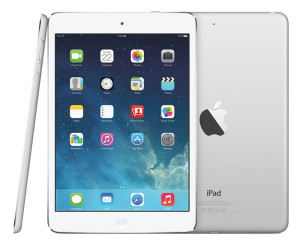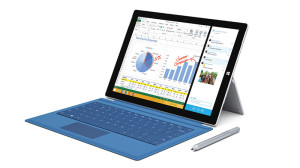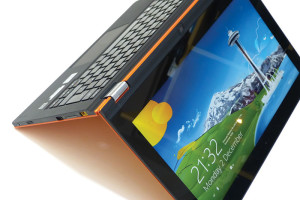How much more efficient would structural engineers be if they had access to all of their resources wherever they want? Imagine if resources like construction documents, as-built drawings, project correspondence, calculations, building codes, reference materials, computer analysis programs, product manuals, colleagues, etc. could be carried to every meeting, hauled around to every jobsite and brought home every night. This may not have seemed possible several years ago, but this is exactly what today’s structural engineer can do with the recent advancements in digital technology and tablet style computers.
Resources Go Digital
In today’s digital world, it is easier and more cost effective than ever to create, manipulate, store and retrieve digital media. Phone calls can be recorded by web-based teleconference services and voice over internet protocol (VoIP) systems. Digital files can be created and manipulated thanks to advancements in digital scanners and portable document format (PDF) software. Storage of digital files can be hosted on office servers or in the cloud through web-based storage suppliers. Accessing digital media remotely is more efficient thanks to web-based storage suppliers, file transfer protocols (FTP), virtual private networks (VPN) and remote desktop applications.
These advancements have changed the way the construction industry shares information. Questions and answers can be created and transmitted almost instantly. Coordination between disciplines can occur in real time with teleconferencing and online meeting services. Permit drawings can be digitally signed and posted to web-based servers for submission to the City. Requests for information and shop drawings are transmitted digitally through email, host servers, or online project management systems. Codes, textbooks, testing reports, product manuals, and inspection forms are all available digitally. The digital trend in the construction industry has created an opportunity for structural engineers to create a virtual workspace with real time access to project files and other resources, provided the engineer has an internet connection and a computer.
Breaking New Ground
Traditionally, laptop computers have been the only mobile computers available to the on-the-go engineer. With the release of iPad and Android tablets in 2010, engineers now have an alternate solution to accessing their resources. The tablet computer, with its slim profile and lightweight design, allows an engineer access to his desktop computer through VPN and remote desktop software applications. Files stored in the cloud can be accessed through other applications which can then be downloaded and installed on the device. Though not as powerful as a laptop, the tablet can still view and manipulate files seamlessly since it is not functioning as a storage device. While tablets hold some capacity to store files directly on the device, the primary function of the tablet computer is as a portal that allows temporary access to the file before saving it back to the cloud or desktop computer. Its efficiency in downloading and saving files is dependent on the strength of the WIFI or cellular signal that connects it to the Internet.
Structural engineers who have found a tablet computer to be an efficient alternative to a laptop computer will be the first to say that the device itself is not what has made their life outside the office more efficient. The efficiency has come from the software that the device utilizes. The applications available to download are as diverse as the engineers who use them. Engineers can take handwritten notes on the tablet during meetings, then convert them to Word documents. They take pictures on a job walk, edit the photos, and insert them directly into field reports. Engineers can also access their construction documents via PDF editors and track field changes as they observe them. Engineers video conference and screen share with their team to resolve issues in real-time. Even drafting and structural analysis applications can allow engineers to answer questions without having to remote access their desktop computer. However, it is not just engineering apps that have made life more efficient. Apps for invoicing, budgeting, expense reporting, traffic, hotel reservations, car rentals, airline reservations, contacts, voice memos, and more are all vital to the engineer on-the-go. The tablet computer has brought all of these resources together in one lightweight package.
Next Generation
For all their advancements and efficiency, tablet computers are not without their drawbacks. Their lack of storage, processing and graphics rendering power, and a USB port are issues that most engineers can work around, but the tablet’s operating system is something that some engineers just cannot adjust to. Structural Engineers typically function in a PC world. A computer that utilizes Windows as its operating system is likely to be the most efficient, since a structural engineer’s work depends on Windows based programs such as Office, AutoCAD, REVIT, and structural design software coded explicitly for the Windows operating system.
Recognizing the need for a Windows based tablet, Microsoft and other computer developers released their versions of the tablet computer starting in 2012 with the release of the Microsoft Surface. Some companies, such as Lenovo and ASUS, combined the laptop and tablet designs and released devices known as Ultrabooks or Two-in-Ones. Whereas the Surface tablet is true to the tablet design with a single touchscreen without an attached keyboard, the Ultrabook looks more like a laptop with an attached keyboard, but it has a large touchscreen that can be rotated into position to create a tablet surface. Both of these new devices can function as a desktop computer by connecting a larger monitor, keyboard (for the Surface), mouse and ethernet cable to its USB and video ports. With the Windows operating system, these devices have their own drives that allow for file storage and program installation directly on the device. This ability to store files and run programs without an Internet connection creates added efficiency for the mobile engineer. Although not as powerful as desktop computers, the Surface and Ultrabooks have a nice balance between portability and computing horsepower.
In the end, with structural engineers, there is never a one-size-fits-all solution. Structural engineers are a unique breed that can be quite particular about their tools. Over the last decade, the structural engineer’s toolbox has grown exponentially with advancements in software development, the advent of the digital age, and the portable efficiency of the tablet computers. These tools have allowed structural engineers to be more mobile while maintaining the same level of efficiency.▪
Field Uses for iPad and Android Tablets
- Access office servers via VPN and remote desktop connections
- Access cloud storage through Internet connection or applications
- Access Outlook emails, tasks, contacts and calendars
- Create and manipulate Word docs, Excel spreadsheets and PowerPoint presentations with the Office for Apple application
- Create PDF files with applications that print camera images to PDF
- View and edit PDF files such as construction documents or site photos with PDF viewing applications
- Take and upload site photos while still onsite with built-in camera
- Prepare and submit field reports while still onsite
- Web conference with design team or contractors
- Screen share with design team or contractors
- Take handwritten meeting notes that can be transferred to Word documents with note taking applications
- View AutoCAD files with Autodesk viewer applications
- Use engineering analysis applications
Field Uses for Ultrabooks and Surface Tablets
- Access office servers via VPN connection
- Access cloud storage through Internet connection
- Access Outlook emails, tasks, contacts and calendars
- Create and manipulate Word docs, Excel spreadsheets and PowerPoint presentations with Windows operating system
- Create PDF files by printing camera images to PDF
- View and edit PDF files such as construction documents or site photos with built-in camera
- Take and upload site photos while still onsite
- Prepare and submit field reports while still onsite
- Web conference with design team or contractors
- Screen share with design team or contractors
- Take handwritten meeting notes that can be transferred to Word documents with Windows OneNote
- View AutoCAD and REVIT files using the Autodesk programs
- Use structural engineering programs installed on the tablet



